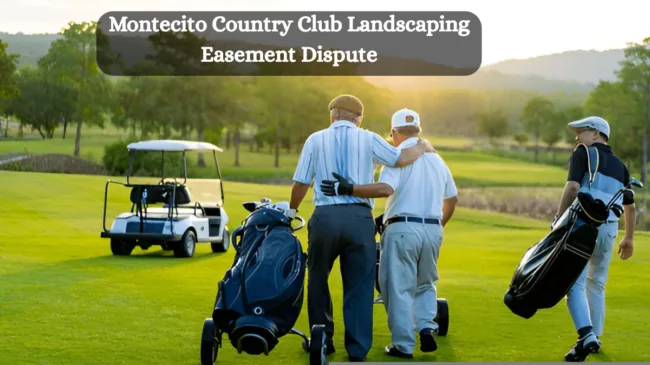Introduction
Located in upscale coastal enclave Montecito, California, the Montecito Country Club (MCC) is an archetypal embodiment of luxury, privilege, and rustic charm. But beneath its glistening golf greens and high-end clubhouse lies a hotly contested court fight between residents and club officials over easement rights that has pulled questions of basic property rights, land use, and neighborhood access into a storm.
This historic struggle is over disputed easements that provide some residents with access to the club property. With millions of dollars in value at stake and decades of ill will between the two, the case of the Montecito Country Club easement is an intriguing private governance, real estate law case study of the challenge in balancing exclusivity with common good.
Background: The Montecito Country Club and Its Historic Easements
The Montecito Country Club, established in the early part of the 20th century, is an upscale Santa Barbara County private club. The club’s lovely and lush fairways and ocean-view mansions are selected by upscale residents like billionaires and celebrities. The club has walked a fine line over time between neighboring property rights involving easements for access to parts of the club property and membership benefits of private clubs.
These easements extend as far back as the initial development of the property itself, where residents were granted rights of way to drive over club land for recreational activities, such as walking, horse riding, or in order to access neighboring beaches. With the club now in development, however—building facilities and increasing security measures—some residents claim their existing rights of way have unfairly been lost.
The Epi-Center of the Conflict: What Are Homeowners Fighting Over?
The epi-center of the conflict are two things:
Alleged Easement Right Violations – The initial task homeowners accused the club of illegally obstructing or interfering with their right of access to walkways and recreation properties promised under decades-old easement agreements. They claimed that fences, gates, and security devices were constructed without any type of consultation, by degrees, eliminating their rights.
Property Value Impacts – Part of the more expensive Montecito homes are partially valued so highly because they are proximate and convenient to the country club. If easement rights are diminished, residents worry that their home values will be greatly affected.
The club contends, however, that it is entitled to use its land so as to enable security, privacy, and exclusivity for members. The club contends that some of the easements never were actually recorded at all or are too broad in terms to be enforceable, and that modern security and liability interests necessitate some restrictions.
Legal Battles and Court Proceedings
The controversy has resulted in a high number of lawsuits as residents sued the club for violation of easement agreements. Some of the most serious issues of law are:
Construction of Easement Terms – Some of the original easements were worded in permissive language open to disputative interpretation. Courts will have to determine whether the restrictions by the club represent reasonable adjustment or unlawful interference.
Prescriptive Easements – Some homeowners claim the owners of the houses acquired the rights through continuous, frequent use, though the easements were not ever recorded.
Injunctive Relief – The plaintiffs ask that the courts issue orders directing the club to tear down the barriers and open access, whereas the club seeks enforcement of its current rules governing land use.
The case is of concern to real estate attorneys and land-use experts because it has the potential to set precedents on how suburban neighborhoods and private clubs handle similar cases.
Wider Implications: Suburban Community vs. Private Club bylaws
The Montecito Country Club scandal illustrates the expanding seeming contradiction in gated communities:
The Conflict between Private and Shared Space – While security and secrecy are advertised in the form of private clubs, residents from surrounding neighborhoods previously with unstipulated access are excluded.
The Effect of Prior Agreements – Ancient easements have most often been put into writing when land use was less regulated, providing uncertainties which must be clarified by current courts.
Economic and Social Implications – Restricted access can reshape residential living, affecting house price and people-to-people relations.
Solutions and the Roadmap Ahead
Possible solutions are:
Negotiated Arrangements – Residents and the club might reach an understanding, i.e., access at certain times or changed routes.
Court-Enforced Changes – A judge might order the removal of some obstacles or the club may impose restrictions.
Easement Buyouts – The club can purchase homeowners to get them to relinquish their easement right.
Conclusion
The Montecito Country Club easement war is a Santa Barbara courtroom struggle and a symbol of wider struggles over property rights, land use, and the conflict between public access and private property. As it plays out, it will serve as a benchmark for the same wars at gated communities across the nation.
